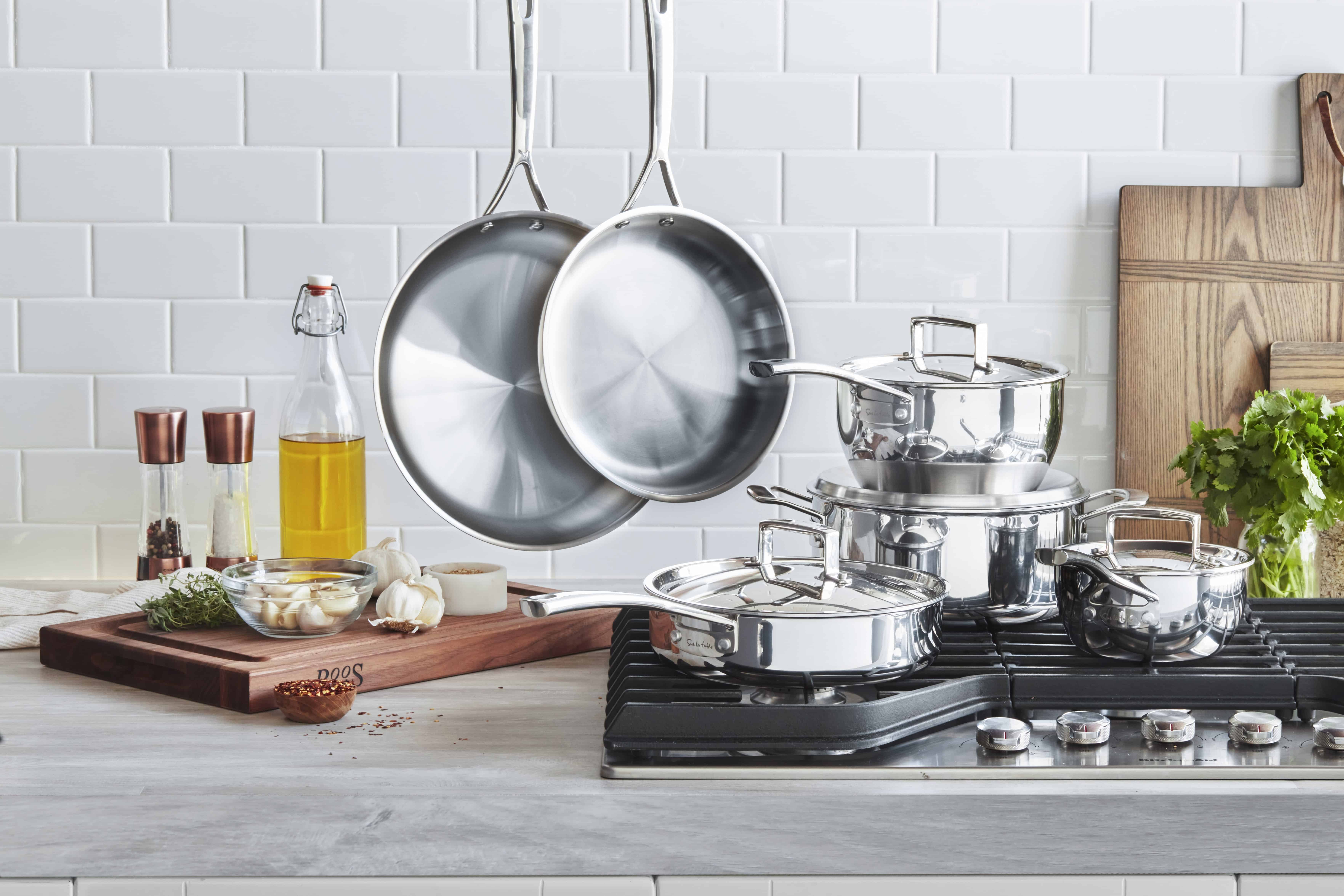Decisions, decisions.


There’s a reason (correction: a lot of reasons!) stainless steel cookware is universally loved by chefs all over the world. Its sleek look combined with unmatched durability and versatility make it a go-to choice for any kitchen.
But to ensure your stainless steel pans serve you well for years to come, it’s crucial to know not just how to use them, but also what to avoid.
Mishandling or mistreating your stainless steel pots and pans can lead to damage, affecting their performance and appearance. To keep your stainless steel cookware looking and performing its best, here are 12 things not to do.
Hungry for more? From skillets and sauté pans to pans designed for every day—and every meal—our collection of Stainless Steel Cookware has just the piece you’re looking for.
Sometimes we just want to speed things up a bit. But blasting your stainless steel cookware on high heat is a surefire way to invite food to stick, discolor your pans and potentially warp them. Medium heat is often your best bet—it’s cookware’s comfort zone.
Scouring pads or harsh cleaners can scratch and damage the surface of your stainless steel cookware. These scratches not only mar its appearance, but can also affect its performance. Stick to gentle cleaning agents and use soft sponges or cloths for cleaning.
Adding salt to cold water in stainless steel pots can cause pitting corrosion, creating small, irreversible pits on the surface. Always wait for the water to boil before adding salt to prevent this type of damage.
Air-drying your stainless steel cookware can lead to water spots from mineral deposits in the water. These spots can be tough to remove and affect the cookware’s appearance. Instead, dry your pots and pans immediately after washing to avoid this issue.
Storing food in your stainless steel cookware, especially acidic or salty foods, can lead to staining and damage. It’s best to transfer leftovers to appropriate storage containers to protect both your food and your cookware.
While stainless steel is much more durable than its nonstick counterparts, metal utensils can still scratch the surface and leave it vulnerable to rust and stains. Opt for utensils made of silicone, wood or plastic to keep your cookware in pristine condition.
Ever heard that sizzle when hot meets cold? That is not a good sound when it comes to stainless steel cookware.
Plunging your hot stainless steel pots and pans into cold water can cause them to warp due to the rapid change in temperature. Allow your cookware to cool down naturally before washing to maintain its shape and structure.
Cooking sprays can leave a residue that is difficult to remove and may build up over time, affecting the pan’s performance and taste of your food. Instead, use a small amount of butter or oil to prevent sticking.
Jumping the gun and adding food to a cold stainless steel pan can lead to sticking. Give your cookware a minute to warm up (medium heat, remember?).
If you’re wondering how to cook with stainless steel, or not sure when it’s hot enough, sprinkle a few droplets of water onto the pan’s surface. If the water droplets bead and dance or skitter across the surface, the pan has reached the desired temperature and is ready for the oil or butter to be added.
This creates a natural nonstick surface and ensures even cooking and easy release of food.
Check out this article for a more detailed guide to cooking in stainless steel.
Each brand may have specific recommendations for care, cleaning and use tailored to preserve the quality and extend the lifespan of their products.
These instructions can include guidance on heat settings, cleaning methods and utensil preferences. Neglecting these guidelines can lead to premature wear, damage or may even void the manufacturer’s warranty.
Stuck-on bits after searing or sautéing? Deglaze the pan with a little liquid (water, wine, vinegar or stock work great), which lifts those bits and makes cleaning easier. Plus, it’s the first step to a delicious sauce.
While stainless steel is oven safe and can handle high oven temperatures, the direct and intense heat from a grill can exceed these limits.
Grills often reach temperatures much higher than standard ovens, which can cause damage to the cookware, such as warping or discoloration. This intense heat can also affect the cookware’s structural integrity and cooking performance.
Hungry for more? From skillets and sauté pans to pans designed for every day—and every meal—our collection of Stainless Steel Cookware has just the piece you’re looking for.
Great advice. I grabbed a CHEFS Never Stick, Stainless Steel pot at a thrift store. The Beautiful pot has some stuck on brown flecks stuck on the sides of the pot where the metal line is. What should I use to get rid of these (looks like stuck on food particles)? How should I best do this? Thank You for any advice you can give me. I like this pot and look forward to using it after a good and thorough cleaning.
This is truly great guidance for the aspirants of interior design. The guidance about who is an interior designer, how to get there, and how about the career path are so very well explained. Thank you for the very helpfulpost.<a href=”https://bethliving.com/advertising/”>Best Modular Kitchen and Wardrobes | Interior Design for Home</a>